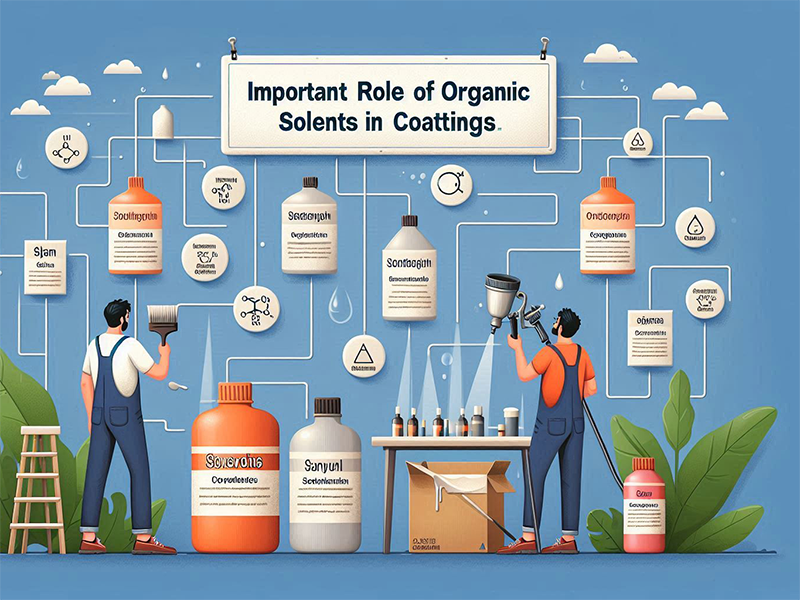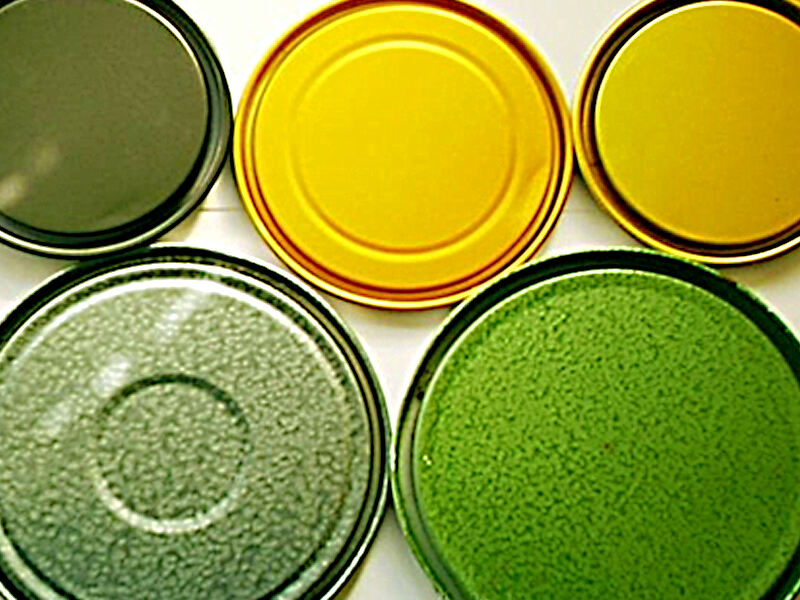U svijetu obloga, organički razjačivači su neizostavni "nezapaženi junaci." Oni ne samo što pomagaju u raspuštanju rezina već također reguliraju viskoznost obloga, poboljšavaju strujne svojstva i na kraju dne promiču formiranje filmskog sustava. Danas ćemo uputići pažnju na to kako ovi razjačivači, kroz fizičke i kemikalne interakcije, čine sustave obloga prilagodljivijima za primjenu i utječu na konačnu performansu obloga.
Raspuštanje rezina: Omogućavanje jednolikog tečnog sustava
NAČELO
Kada je polaritet razjačivača podudaran s polaritetom rezine, molekule razjačivača pronizavaju rezinske molekule, rušeći međumolekulske sile kao što su hidrogenske veze, van der Waals-ove sile ili dipolske interakcije, time raspuštajući rezinu.
Na primjer, cetonski raztopitelji (poput metil etil cetona, MEK) mogu učinkovito raspustiti poliuretanske smole zbog slične polarnosti.
Činili koji utječu
Polarnost raztopitelja: Polarne tekućine (poput alkohola, cetona i estera) prilagođene su za raspisivanje polarne smoli (poput alkidnih smola i poliuretana), dok su nepolarne tekućine (poput toluena i xilena) bolje za nepolarne smole (poput akrilnih smola).
Parametri raspustivosti raztopitelja: Raztopitelji s sličnim Hildebrandovim parametrima raspustivosti su kompatibilniji sa smolama.
Primjeri
Akrilne obloge → Koristite estere (npr. butil acetat) i aromatične ugljikovodici (npr. xilen) za raspisivanje.
Poliuretanske obloge → Koristite cetone (npr. MEK, MIBK) za raspisivanje.
Alkidne smoline → Koristite alkohole (npr. izopropanol) i cetone (npr. acetone).
Prilagođavanje viskoznosti: Optimizacija performansi primjene
NAČELO
Razvojnici smanjuju interakcije između smolu i punjenja, smanjujući međumolekularne sile unutar sustava za obložavanje, time smanjujući lepljivost i poboljšavajući svojstva toka. Tijekom spremanja, obloživa s umjerenom lepljivošću mogu pokrivati površine jednolijevo, što poboljšava kvalitetnu primjenu.
Činili koji utječu
Razvojnici s visokom volatilnosti (npr., acetone, MEK) brzo smanjuju lepljivost i prikladni su za brzo sušljive obloživa.
Razvojnici s nizom volatilnosti (npr., xylol, butilski acetat) održavaju fluidnost obloživa i idealni su za primjenu štapirom ili valjem.
Primjeri
Automobilna obloživa (Spremanje) → Trebaju niske lepljivosti; odaberite vrlo volatilne ketone (npr., MEK).
Obloživa za drvo (Primjena štapirom) → Odaberite sporišeće isparujuće estere (npr., butilski acetat).
Poboljšanje svojstava toka: Spriječavanje traga štapa i narandžastog kože
NAČELO
Odgovarajući iznos razjačivača smanjuje površinsku napetost, omogućujući ravnomjerno raspršivanje obloženja i umanjujući oznake od četkica, prolivanje ili "pomorandžasti" efekat. Uz ravnotežu visoko- i nisko-volatičnih razjačivača, može se osigurati ravnomjerna evaporacija razjačivača, što sprečava probleme poput prebrzeg sušenja površine dok unutrašnja strana ostane mokra (zadržavanje razjačivača).
Činili koji utječu
Brzina evaporacije razjačivača:
Prebrzo → Može uzrokovati bube, pinhole-ove ili pomorandžasti efekat.
Predugo → Može uzrokovati prolivanje i teškoće prilikom primjene.
Omjer razjačivača: Obično se koristi kombinacija brzo-, srednje- i sporo-evaporirajućih razjačivača kako bi se optimizirao ravnomjerni izravnanje obloženja.
Primjeri
Metalne boje (spricanje) → Zahtijevaju dobro izravnanje; koristite sporo-evaporirajuće razjačivače (npr., butil acetat) kako biste izbjegli pomorandžasti efekat.
Industrijska antikorozijska obloženja → Zahtijevaju brzo sušenje; koristite brzo-evaporirajuće razjačivače (npr., aceton, MEK).
Poticaja formiranja filma: Ravnomjerna evaporacija za glatko obloženje
NAČELO
Poslije primjene, razvijači se postupno isparuju, što omogućuje molekulama rezina da se približe i prepleštaju, konačno formirajući neprekinuti i jednolik film. Dobro uravnotežena brzina isparavanja razvijača kontrolira proces oblikovanja filma, izbjegavajući naprše kao što su iglasti otoci, narančasti kožur i vrpce.
Činili koji utječu
Brzina isparavanja: Prebrzo može uzrokovati da se površina obloge ususi prije unutarnjeg dijela, što može dovesti do prska ili iglastih otoca.
Saglasnost razvijača: Različite kombinacije razvijača utječu na jednolikost filma. Na primjer, dodavanje odgovarajuće količine malooparivnih razvijača može sprečiti prebrzo sušenje.
Primjeri
PU obloge za drvo → Trebaju se koristiti sporiše isparujući cetoni + esteri (npr., MIBK + butil acetat) kako bi se osiguralo jednoliko oblikovanje filma.
Nitrocetinske sprej boje → Trebaju se koristiti brzo isparujući cetoni (npr., MEK) kako bi se skratilo vrijeme sušenja.
Zaključak
Uloga organskih raztopnika u oblogama ulazi daleko izvan jednostavnu "raztopinu." Prilagodbom viskoznosti, poboljšanjem tečnih svojstava i promicanjem formiranja filma, oni izravno utječu na performanse primjene i konačnu kvalitetu obloga. Odabir pravilne miješavinu raztopnika ne samo što čini obloge lakše za primjenu, već također poboljšava njihovu trajnost i završetak.
Sljedeći put kada natrljate zid ili spremitelite površinu, trenutak posvetite ocjeni tih činjeno običnih tečnosti – ti tiho djeluju čuda iza kulisa!
za više informacija posjetite našu web stranicu na


 EN
EN
 AR
AR
 BG
BG
 HR
HR
 CS
CS
 DA
DA
 NL
NL
 FI
FI
 FR
FR
 DE
DE
 EL
EL
 HI
HI
 IT
IT
 JA
JA
 KO
KO
 NO
NO
 PL
PL
 PT
PT
 RO
RO
 RU
RU
 ES
ES
 SV
SV
 TL
TL
 IW
IW
 ID
ID
 LV
LV
 LT
LT
 SR
SR
 SK
SK
 VI
VI
 HU
HU
 TH
TH
 TR
TR
 GA
GA
 CY
CY
 KA
KA
 LA
LA
 MN
MN
 KK
KK
 LB
LB




